Abstract
Two Enteritidis PT4 isolates which differed in inherent tolerance to heat, acid, H2O2 and the ability to survive on surfaces were used to infect mice, day-old chicks or laying hens. The acid-, heat-, H2O2- and surface-tolerant isolate was more virulent in mice and more invasive in laying hens, particularly in reproductive tissue. However, no significant differences were observed in behaviour in chicks. Both PT4 isolates were able to infect chicks housed in the same room as infected birds, although the heat-tolerant isolate survived significantly better than the heat-sensitive one in aerosols.
Full text
PDF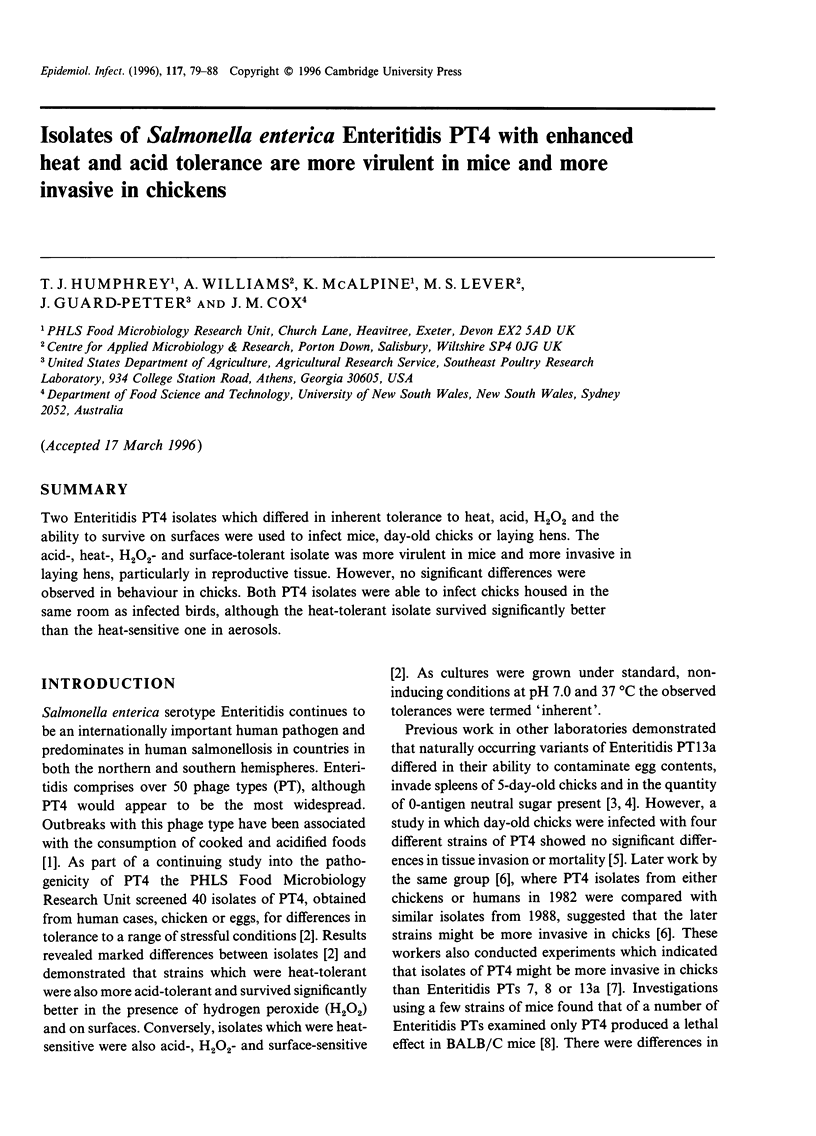
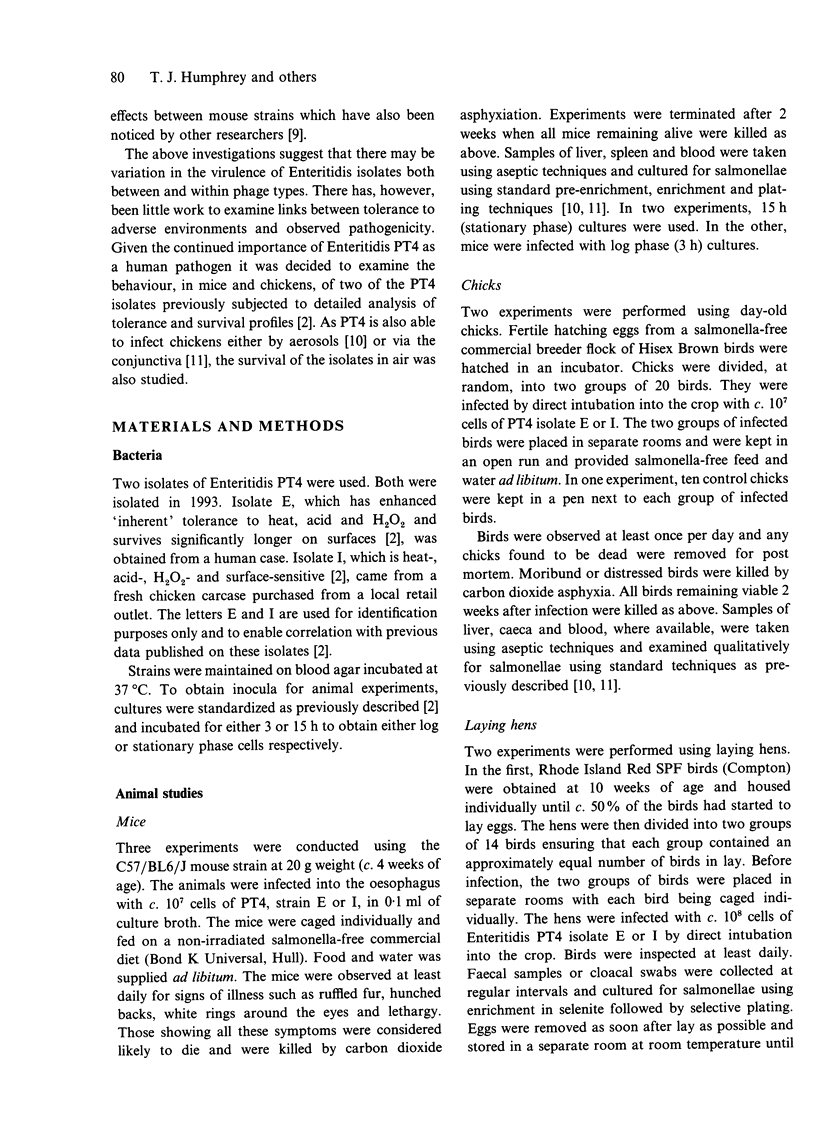
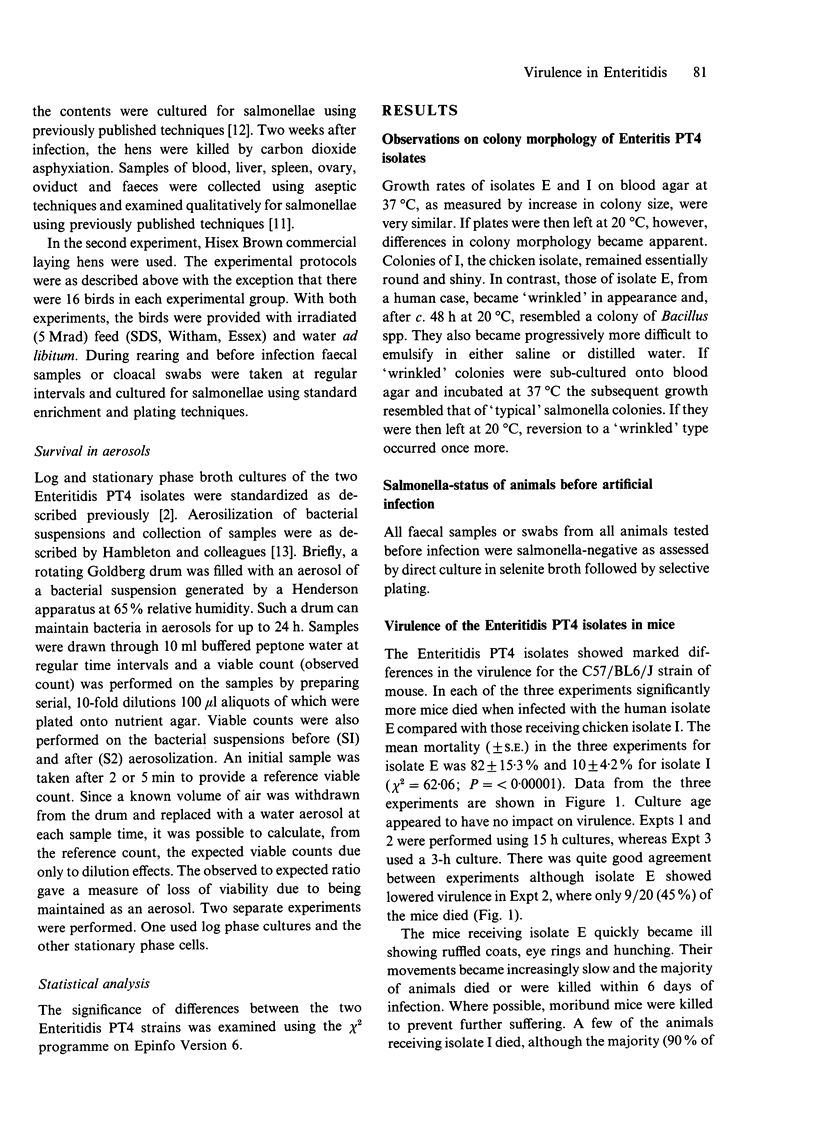
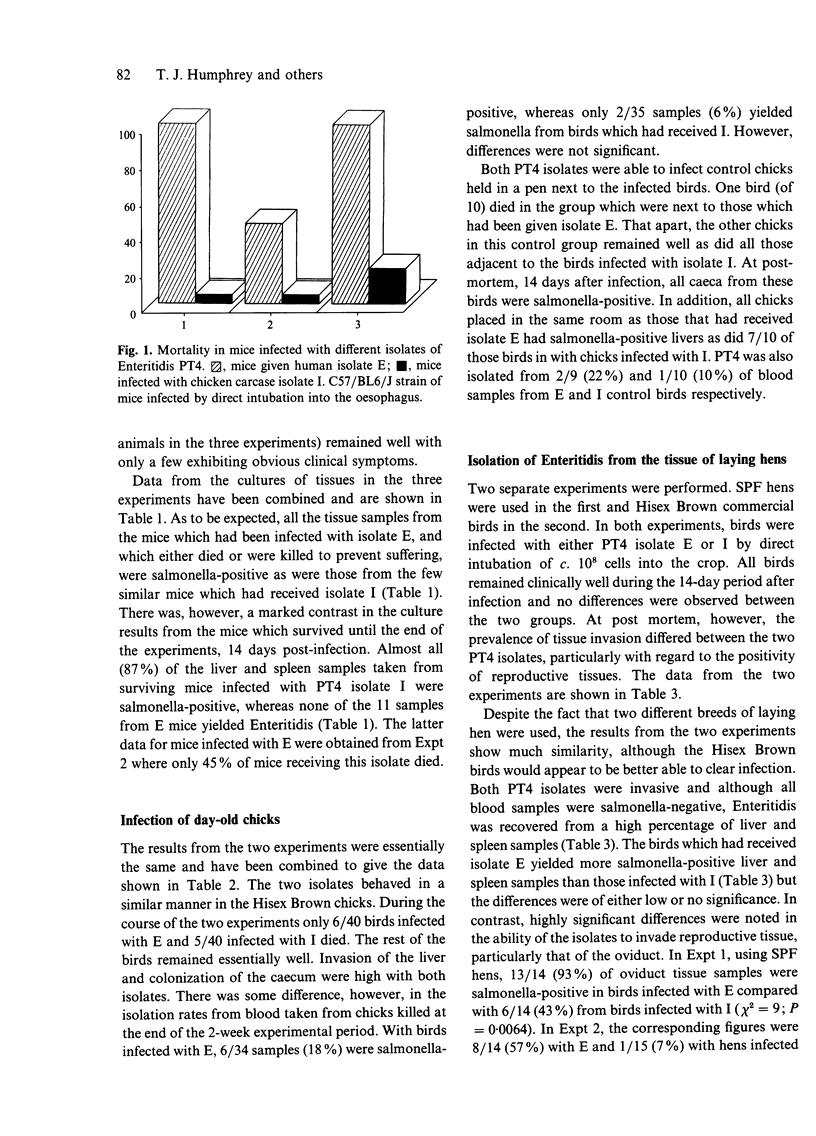
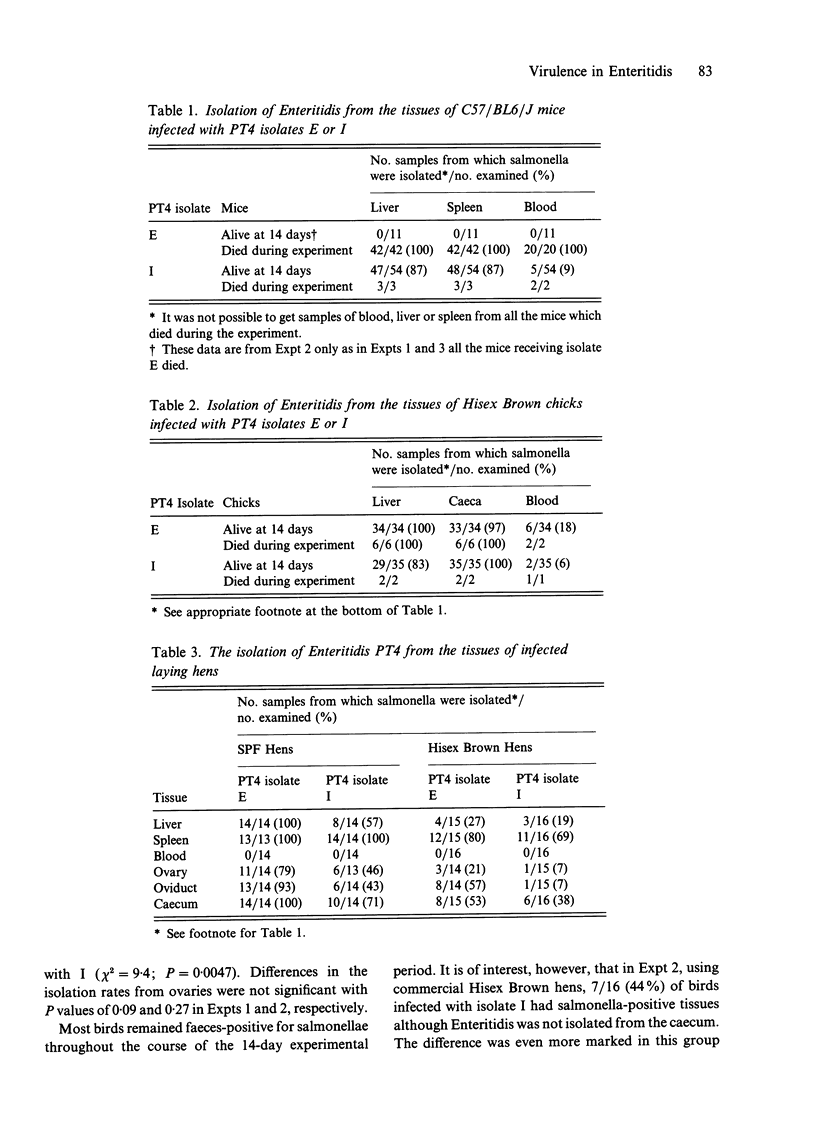
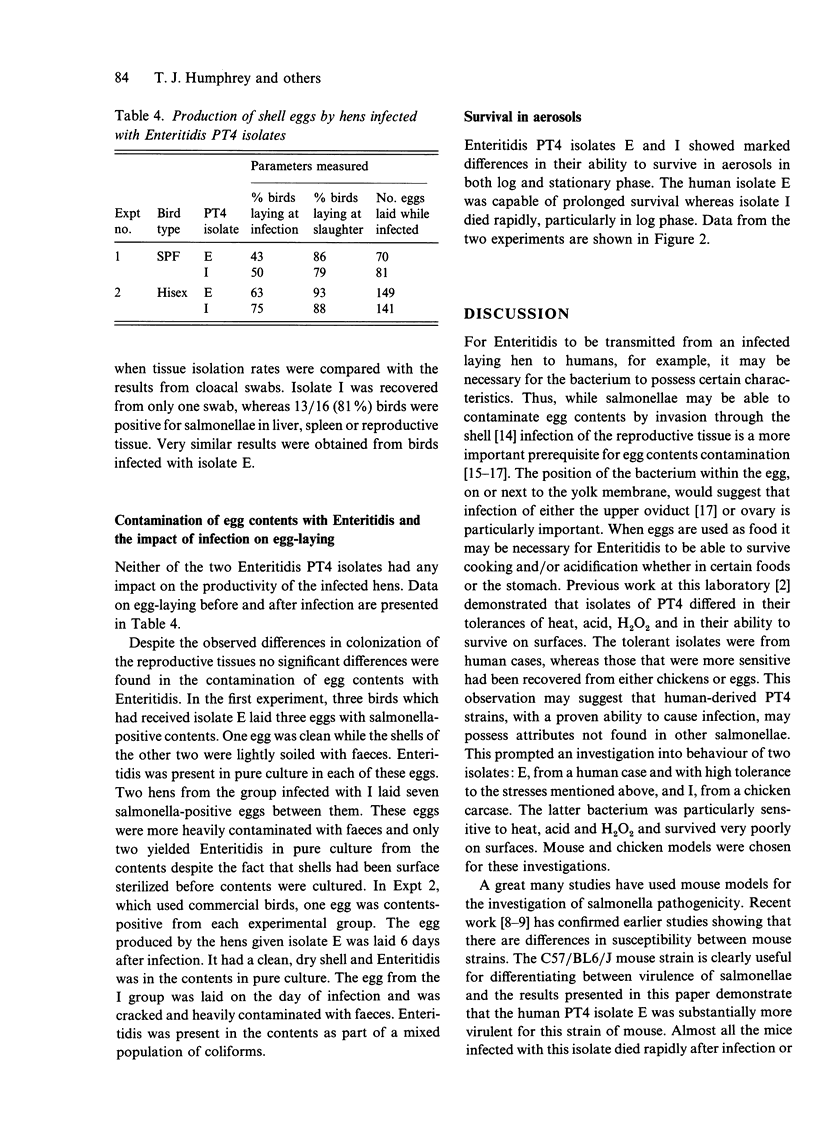
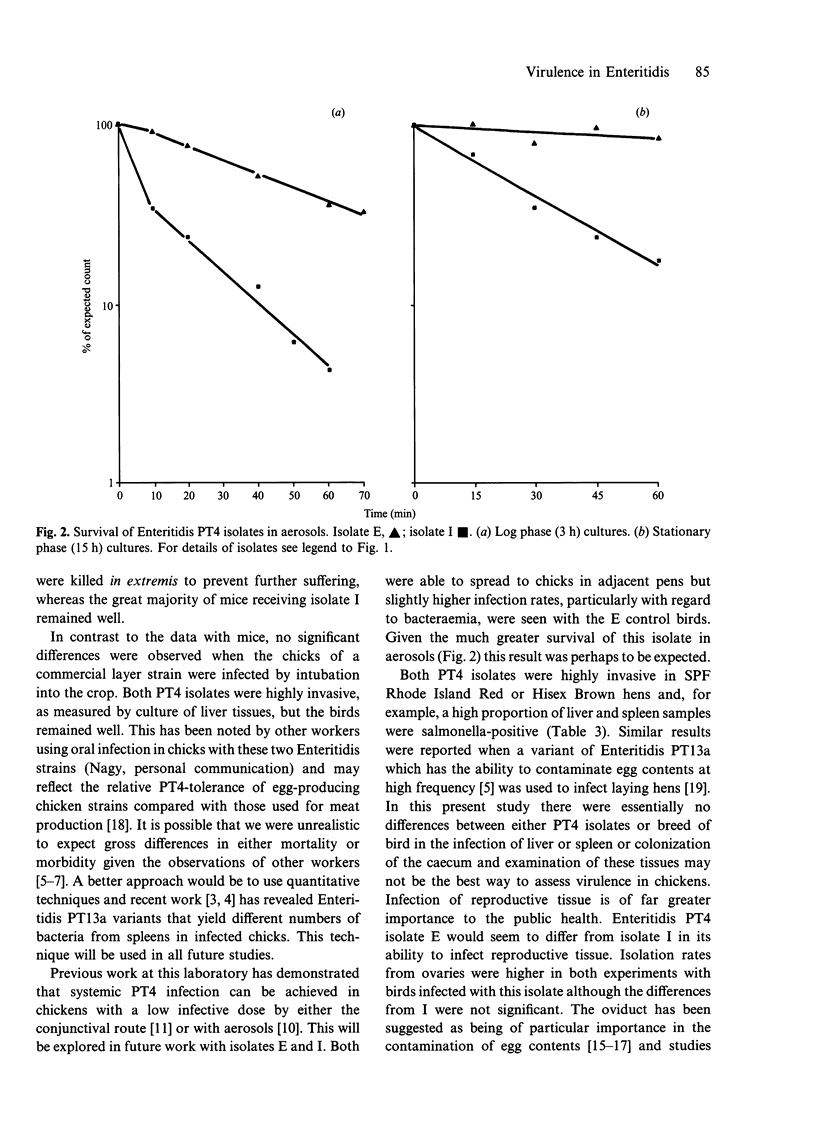
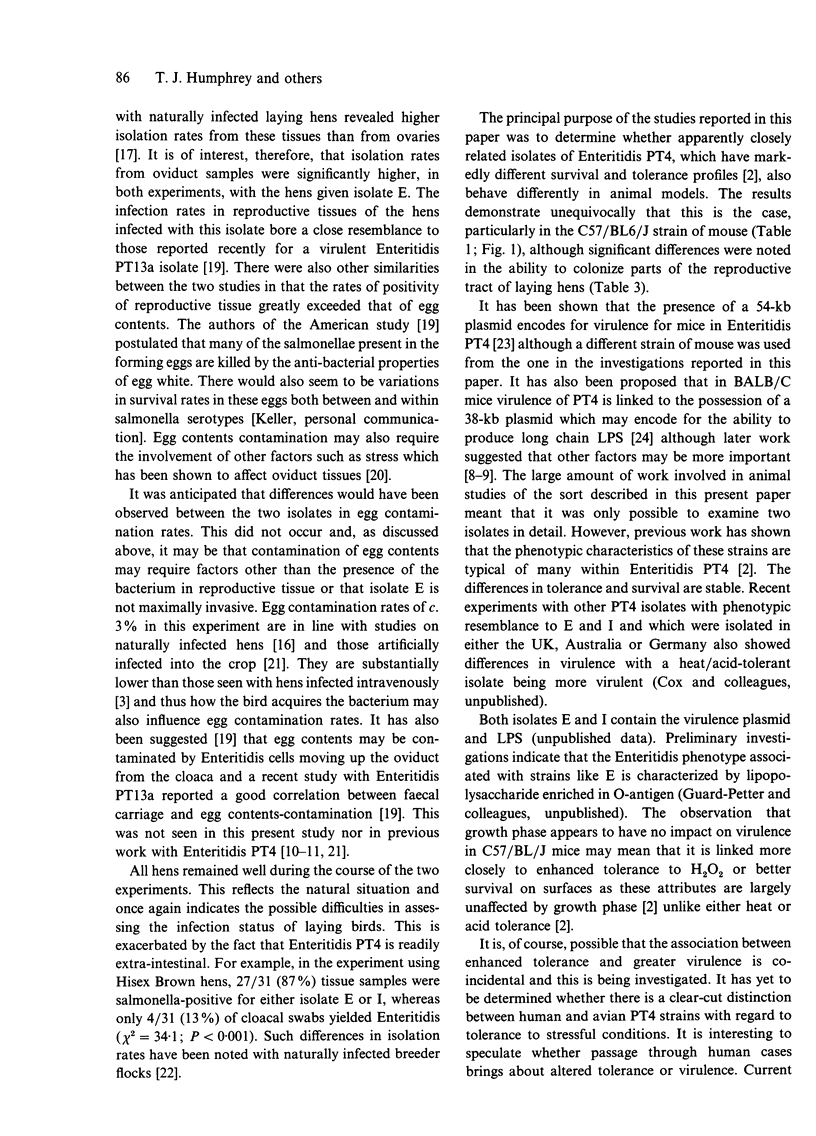
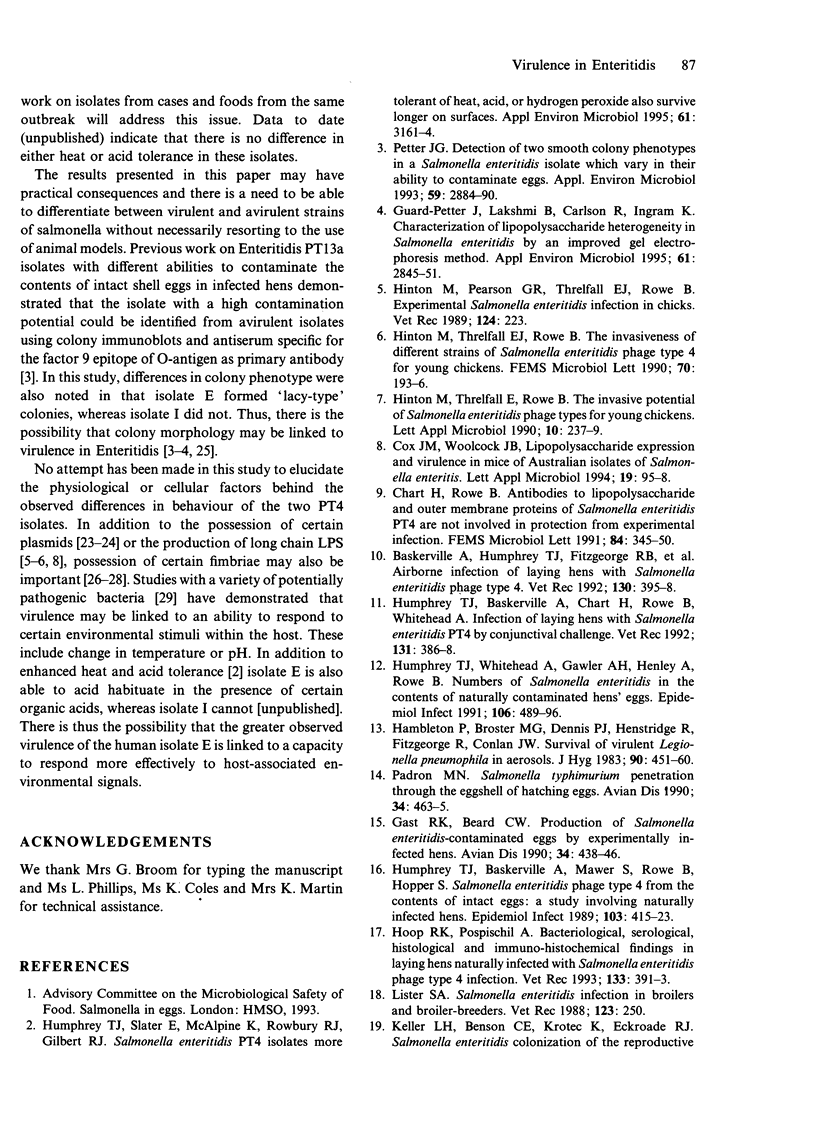
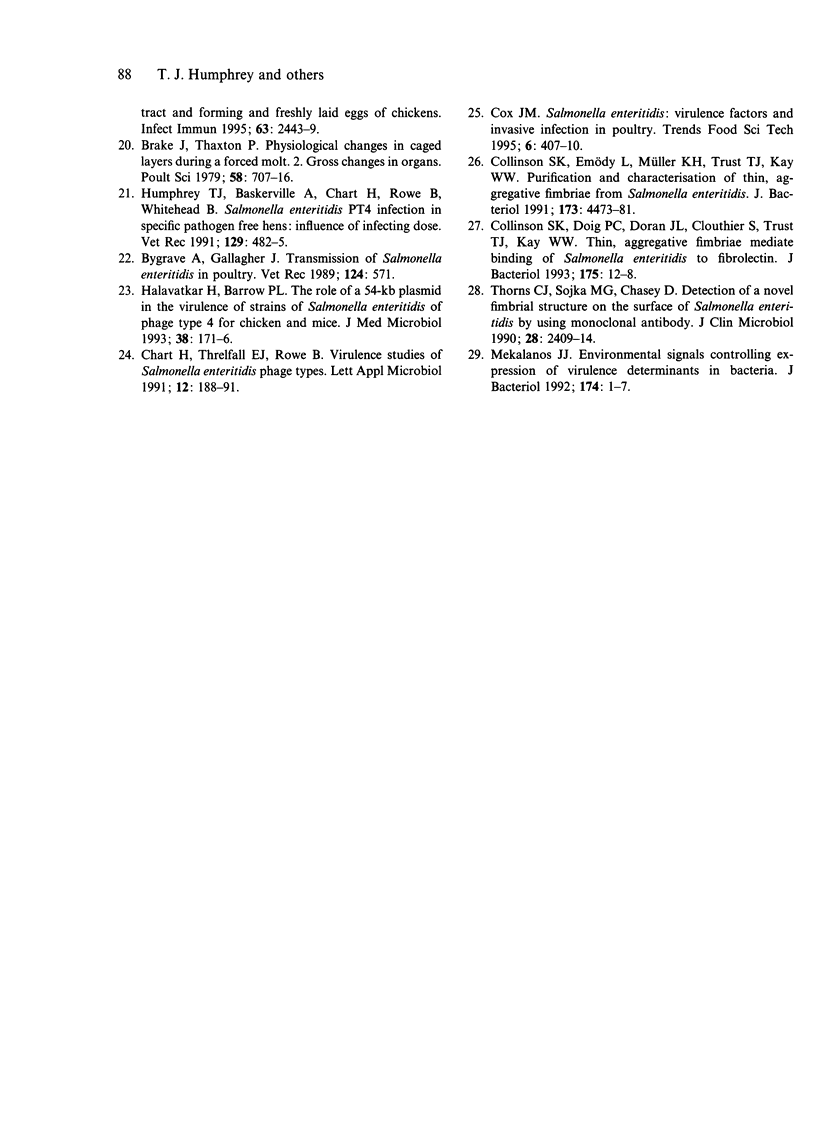
Selected References
These references are in PubMed. This may not be the complete list of references from this article.
- Baskerville A., Humphrey T. J., Fitzgeorge R. B., Cook R. W., Chart H., Rowe B., Whitehead A. Airborne infection of laying hens with Salmonella enteritidis phage type 4. Vet Rec. 1992 May 2;130(18):395–398. doi: 10.1136/vr.130.18.395. [DOI] [PubMed] [Google Scholar]
- Brake J., Thaxton P. Physiological changes in caged layers during a forced molt. 2. Gross changes in organs. Poult Sci. 1979 May;58(3):707–716. doi: 10.3382/ps.0580707. [DOI] [PubMed] [Google Scholar]
- Bygrave A. C., Gallagher J. Transmission of Salmonella enteritidis in poultry. Vet Rec. 1989 May 27;124(21):571–571. doi: 10.1136/vr.124.21.571-c. [DOI] [PubMed] [Google Scholar]
- Chart H., Rowe B. Antibodies to lipopolysaccharide and outer membrane proteins of Salmonella enteritidis PT4 are not involved in protection from experimental infection. FEMS Microbiol Lett. 1991 Dec 1;68(3):345–350. doi: 10.1016/0378-1097(91)90380-s. [DOI] [PubMed] [Google Scholar]
- Collinson S. K., Doig P. C., Doran J. L., Clouthier S., Trust T. J., Kay W. W. Thin, aggregative fimbriae mediate binding of Salmonella enteritidis to fibronectin. J Bacteriol. 1993 Jan;175(1):12–18. doi: 10.1128/jb.175.1.12-18.1993. [DOI] [PMC free article] [PubMed] [Google Scholar]
- Gast R. K., Beard C. W. Production of Salmonella enteritidis-contaminated eggs by experimentally infected hens. Avian Dis. 1990 Apr-Jun;34(2):438–446. [PubMed] [Google Scholar]
- Guard-Petter J., Lakshmi B., Carlson R., Ingram K. Characterization of lipopolysaccharide heterogeneity in Salmonella enteritidis by an improved gel electrophoresis method. Appl Environ Microbiol. 1995 Aug;61(8):2845–2851. doi: 10.1128/aem.61.8.2845-2851.1995. [DOI] [PMC free article] [PubMed] [Google Scholar]
- Halavatkar H., Barrow P. A. The role of a 54-kb plasmid in the virulence of strains of Salmonella enteritidis of phage type 4 for chickens and mice. J Med Microbiol. 1993 Mar;38(3):171–176. doi: 10.1099/00222615-38-3-171. [DOI] [PubMed] [Google Scholar]
- Hambleton P., Broster M. G., Dennis P. J., Henstridge R., Fitzgeorge R., Conlan J. W. Survival of virulent Legionella pneumophila in aerosols. J Hyg (Lond) 1983 Jun;90(3):451–460. doi: 10.1017/s0022172400029090. [DOI] [PMC free article] [PubMed] [Google Scholar]
- Hinton M., Pearson G. R., Threlfall E. J., Rowe B., Woodward M., Wray C. Experimental Salmonella enteritidis infection in chicks. Vet Rec. 1989 Mar 4;124(9):223–223. doi: 10.1136/vr.124.9.223. [DOI] [PubMed] [Google Scholar]
- Hinton M., Threlfall E. J., Rowe B. The invasiveness of different strains of Salmonella enteritidis phage type 4 for young chickens. FEMS Microbiol Lett. 1990 Jul;58(2):193–195. doi: 10.1111/j.1574-6968.1990.tb13977.x. [DOI] [PubMed] [Google Scholar]
- Hoop R. K., Pospischil A. Bacteriological, serological, histological and immunohistochemical findings in laying hens with naturally acquired Salmonella enteritidis phage type 4 infection. Vet Rec. 1993 Oct 16;133(16):391–393. doi: 10.1136/vr.133.16.391. [DOI] [PubMed] [Google Scholar]
- Humphrey T. J., Baskerville A., Chart H., Rowe B., Whitehead A. Infection of laying hens with Salmonella enteritidis PT4 by conjunctival challenge. Vet Rec. 1992 Oct 24;131(17):386–388. doi: 10.1136/vr.131.17.386. [DOI] [PubMed] [Google Scholar]
- Humphrey T. J., Baskerville A., Chart H., Rowe B., Whitehead A. Salmonella enteritidis PT4 infection in specific pathogen free hens: influence of infecting dose. Vet Rec. 1991 Nov 30;129(22):482–485. doi: 10.1136/vr.129.22.482. [DOI] [PubMed] [Google Scholar]
- Humphrey T. J., Baskerville A., Mawer S., Rowe B., Hopper S. Salmonella enteritidis phage type 4 from the contents of intact eggs: a study involving naturally infected hens. Epidemiol Infect. 1989 Dec;103(3):415–423. doi: 10.1017/s0950268800030818. [DOI] [PMC free article] [PubMed] [Google Scholar]
- Humphrey T. J., Slater E., McAlpine K., Rowbury R. J., Gilbert R. J. Salmonella enteritidis phage type 4 isolates more tolerant of heat, acid, or hydrogen peroxide also survive longer on surfaces. Appl Environ Microbiol. 1995 Aug;61(8):3161–3164. doi: 10.1128/aem.61.8.3161-3164.1995. [DOI] [PMC free article] [PubMed] [Google Scholar]
- Humphrey T. J., Whitehead A., Gawler A. H., Henley A., Rowe B. Numbers of Salmonella enteritidis in the contents of naturally contaminated hens' eggs. Epidemiol Infect. 1991 Jun;106(3):489–496. doi: 10.1017/s0950268800067546. [DOI] [PMC free article] [PubMed] [Google Scholar]
- Keller L. H., Benson C. E., Krotec K., Eckroade R. J. Salmonella enteritidis colonization of the reproductive tract and forming and freshly laid eggs of chickens. Infect Immun. 1995 Jul;63(7):2443–2449. doi: 10.1128/iai.63.7.2443-2449.1995. [DOI] [PMC free article] [PubMed] [Google Scholar]
- Mekalanos J. J. Environmental signals controlling expression of virulence determinants in bacteria. J Bacteriol. 1992 Jan;174(1):1–7. doi: 10.1128/jb.174.1.1-7.1992. [DOI] [PMC free article] [PubMed] [Google Scholar]
- Padron M. Salmonella typhimurium penetration through the eggshell of hatching eggs. Avian Dis. 1990 Apr-Jun;34(2):463–465. [PubMed] [Google Scholar]
- Petter J. G. Detection of two smooth colony phenotypes in a Salmonella enteritidis isolate which vary in their ability to contaminate eggs. Appl Environ Microbiol. 1993 Sep;59(9):2884–2890. doi: 10.1128/aem.59.9.2884-2890.1993. [DOI] [PMC free article] [PubMed] [Google Scholar]
- Thorns C. J., Sojka M. G., Chasey D. Detection of a novel fimbrial structure on the surface of Salmonella enteritidis by using a monoclonal antibody. J Clin Microbiol. 1990 Nov;28(11):2409–2414. doi: 10.1128/jcm.28.11.2409-2414.1990. [DOI] [PMC free article] [PubMed] [Google Scholar]


